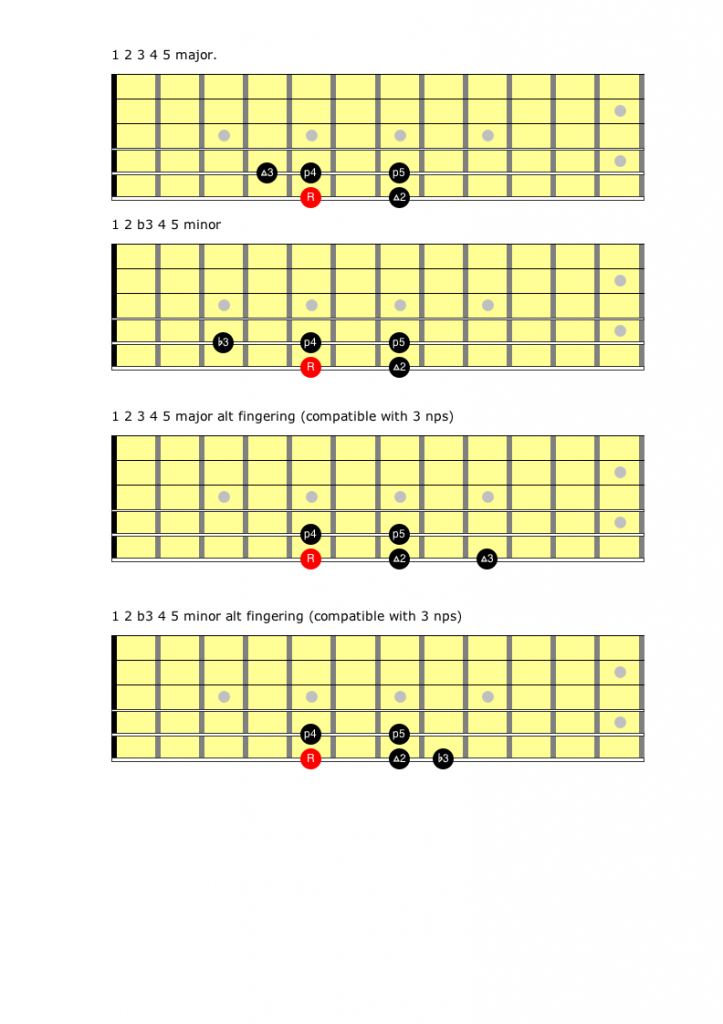Starting to find your way around the fretboard – 1 2 3 4 5
This lesson introduces you to a new way of thinking about the fretboard, and about sounds as being in different categories. You will learn to identify these categories and this is going to liberate you. As you learn more about guitar, you will add a knowledge of how different note relationships sound, as notes only have meaning when you hear them in context.
Eventually, you will know how each note out of 1,2,3,4,5 ‘feels’ when it is played against its chord. It’s a great idea to sing each note as you play them against a chord and to evaluate each number in terms of how it feels to you. Some will fit perfectly against the chord, and some will be tense, or at least ambiguous, but this isn’t a bad thing. I personally love a 2 against a minor chord. It has a certain kind of dissonance that I like. A 3 is considered extremely consonant, a 1 very stable, a 4 quite tense, etc.
Your mission is firstly to learn the shapes so that you can play 1 2 3 4 5 major or 1 2 b3 4 5 minor. If you get this far, this is plenty. Play with alternate picking. If you are already into playing full scales, see if you can devise a sequence.
Dm E Latin
Dm E Rock
After that, you want to play each shape from a root on 6th string, a root on 4th string and a root on 2nd string. This will mean that you are always able to find the next octave up, wherever you are and whatever you are playing. Restating an idea up the octave introduces the idea of pitch range as a creative variable. As the name suggests, pitch range is whether the notes are lower or higher. You can repeat an idea exactly but move it up the octave, and the effect will be a heightened tension as the pitch range goes up. It will start the process of you being able to rapidly identify different root notes on the neck, and building your understanding of where different notes are. Do this with any of these notes:
A E
D F
G Bb
C B
Here are two backing tracks that have two bars of Dm and two bars of E. (Of course, you can repeat this with any combination of chords).
Start by creating one lick in Dm. Play it, leaving out the bar of E. Then alter your lick by moving it up one tone to E, and changing any minor third to major third. Play this, leaving out the Dm.
Then play both licks one after the other.
If you get this far, you have already learned a lot. You can continue this by playing your two licks the next octave up.
If you repeat this process, you can end up with two different pairs of licks, and the adjustment from minor to major, coupled with the octave shift, will sound awesome – but all you had to do was learn two little shapes!
Ideas for helping you create licks:
1. Write down any three numbers between 1 and 5. Create a lick using those three notes only, taking note of how different notes sound and feel. (Major and minor variations).
2. Reverse the order of the notes you just played. (Major and minor variations).
3. Get the five notes in your head, and hum something from them, and then find it.
4. Include a slide or a hammer on.
